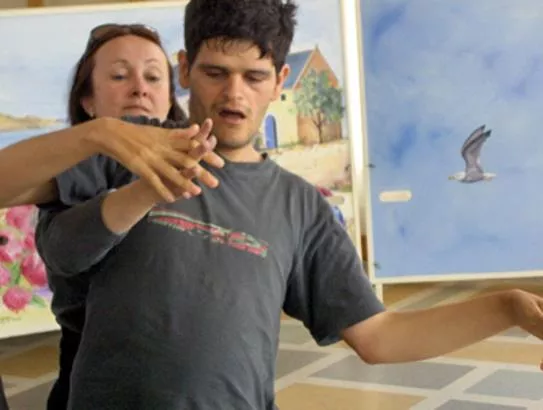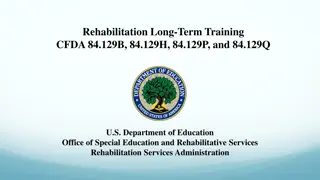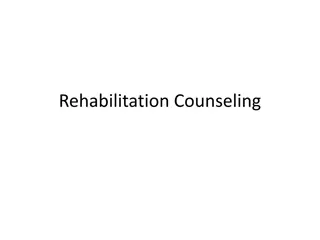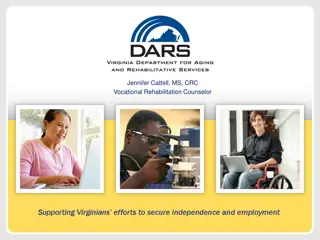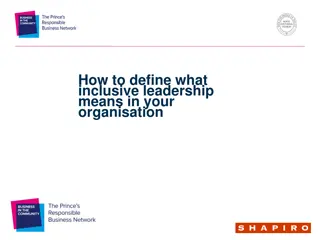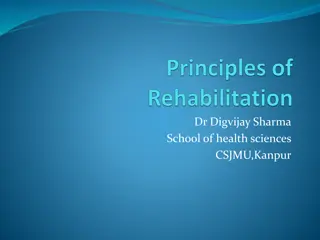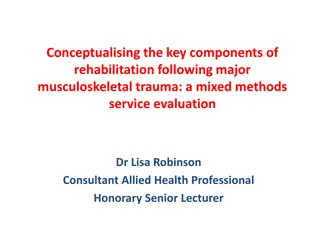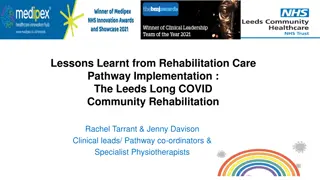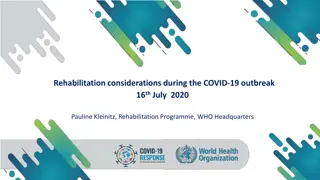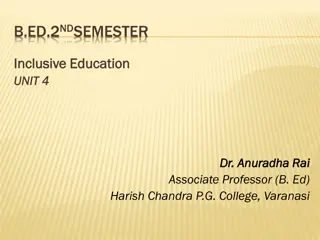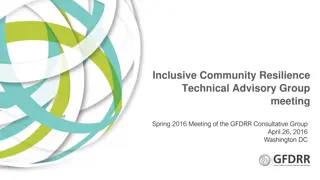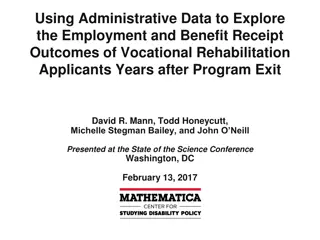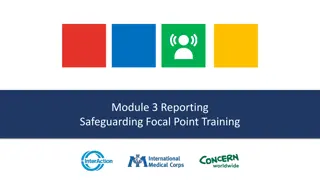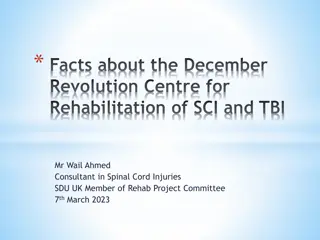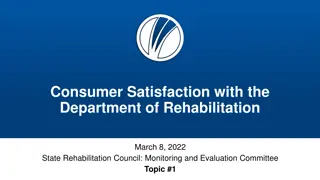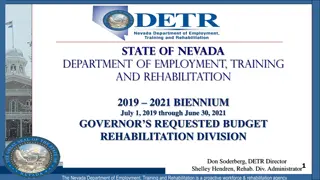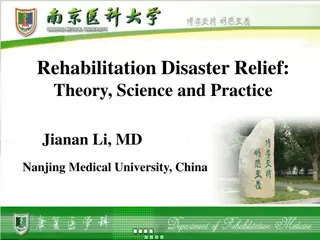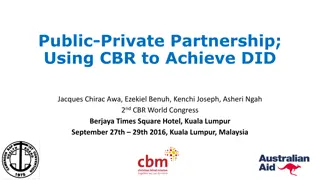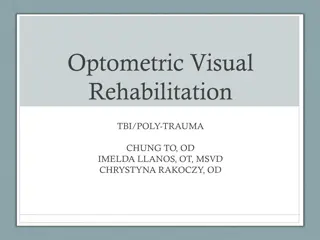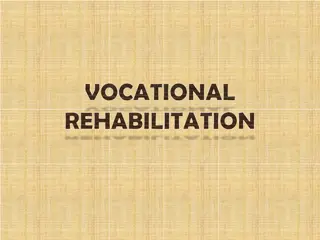Community-Based Rehabilitation: Empowering Inclusive Development
Community-Based Rehabilitation (CBR) is a strategy that originated in 1978 as a means to enhance access to rehabilitation services for individuals with disabilities in developing nations. Over the years, CBR has evolved into a holistic approach for fostering inclusive community development. By decentralizing services and utilizing local resources, CBR aims to address the challenges faced by people with disabilities in their daily lives. This strategy not only bridges the gap in access to professional rehabilitation but also empowers individuals and communities to support each other towards a more inclusive society.
Download Presentation

Please find below an Image/Link to download the presentation.
The content on the website is provided AS IS for your information and personal use only. It may not be sold, licensed, or shared on other websites without obtaining consent from the author. Download presentation by click this link. If you encounter any issues during the download, it is possible that the publisher has removed the file from their server.
E N D
Presentation Transcript
SESSION 1.1. COMMUNITY-BASED REHABILITATION (CBR). HISTORY AND RELEVANCE Munavvarova Umeda, RUO Programme Coordinator, Tajikistan Branch of Caritas Germany The presentations were prepared on the basis of materials by E. Klochkova and L. Samarina, international consultants on CBR, physical therapy and early intervention Bishkek, 29-30 October 2018.
IT IS KNOWN THAT According to expert estimates, at least 10% of people worldwide have disabilities. 2.5-3% of peoplewho live near us have some kind of disability or limitation and could benefit from rehabilitation. Usually, rehabilitation centres, sanatoriums and hospitals are located in large cities; it is difficult to get there and many people with disabilities cannot get regular or complete assistance there. It is estimated that no more than 2-3% of people who could benefit from rehabilitation receive the correct level of rehabilitation!
This means that we need to build more centres and hospitals! ... We lack, and will for a long time continue to lack, trained staff for rehabilitation facilities. The construction, equipping and maintenance of institutions, and payments to employees, are very expensive, especially if highly professional staff are used. It s impossible to build centres in every town/village
In some countries, it will take more than 100 years to solve the problem of helping people with disabilities by establishing new specialized institutions or mobile services and training highly qualified personnel!
And one more problem People with disabilities experience many difficulties in everyday life; They and their loved ones don't know how to handle eating, feeding, dressing, washing etc. Specialists from rehabilitation centres do not teach, they merely treat...
The Community-Based Rehabilitation Strategy In 1978 , the World Health Organisation (WHO) introduced the concept of CBR following the International Conference on Primary Health Care and the Alma-Ata Declaration. CBR was initially seen as a strategy for improving access to rehabilitation services for people with disabilities in developing countries. Over the next 30 years, however, it has expanded significantly and has now become a strategy for inclusive community development.
COMMUNITY BASED REHABILITATION (CBR) A rehabilitation programme that is as close as possible to the service users Programme aimed at maximizing use of local resources A programme aimed at increasing the skills of persons with disabilities as well as their families and other community members
Since 1989, it has been translated into more than 50 languages! 30 training packages for people who: are visually impaired are deaf have limited mobility have impaired sensitivity have behavioural problems suffer with fits have learning disabilities General packages Guidelines for the Local Rehabilitation Committee for the Coordinator for teachers for people with disabilities for families of people with disabilities
Learning in society Training people with disabilities their loved ones other people living nearby Searching for solutions how to organize support how to make a difference in these people's lives what resources can be used
World Statistics on Disabled People 10% of the world's population , that is 650 million people, are living with disabilities 80% of people with disabilities live in developing countries 15-20% of the world'spoorest people are disabled Only 5-15% of persons with disabilities in developing countries have access to means of assistance 80% of disabled people of working age are unemployed 1-2% of children with disabilities in developing countries have access to education (UNESCO) Only 1% of girls with disabilities in developing countries can read and write (UNICEF)
New definition of CBR Community Based Rehabilitation (CBR) is a strategy implemented within the overall framework of community development aimed at providing rehabilitation and equal opportunities, eradicating poverty and including people with disabilities in society. (International Consultation on Community Rehabilitation, Helsinki, 2003) Later, Member States were called on to "develop and strengthen community-based rehabilitation programmes..." ( World Health AssemblyResolution 58.23 on Disability Prevention and Rehabilitation, 2005) CBR plans are currently being implemented in over 100 countries.
Orientations of the CBR program (Helsinki, 2003) Reducing poverty, given that poverty is a key factor in, and a result of, disability. Promotion of community participation in the design and implementation of CBR programmes and recognition of community ownership of the results of this work. Developing and strengthening multi-sectoral collaboration. Involving organizations of persons with disabilities in the programmes. Scaling up the implementation of CBR programmes. Promotion of best practiceson the basis of evidence.
CBR for 25 years - Poverty and Disability (Helsinki, 2003) Poverty must be eliminated, because it is both a cause and a consequence of disability. The poor are more likely to become disabled, and the disabled are more likely to become poor. Addressing disability issues is a specific step towards reducing poverty in any country. At the same time, addressing poverty issues helps reduce disability. EXAMPLES
Disability and poverty Poverty No job Poor nutrition No skills Poor health No education Disability
CBR for 25 years - Inclusive Community Development (Helsinki, 2003) Development is inclusive if it reaches and engages all, especially groups that are marginalized and often discriminated against Facilitates participation by communities (local communities), including persons with disabilities, in the design and implementation of CBR programmes to enable persons with disabilities to contribute to the creation of new development opportunities, benefit from development and participate in decision-making WHAT DOES THIS MEAN?
Inclusive - an "inclusive" society or a "society for all" The principle of "inclusion" guides policies for: Inclusive (included) education Inclusion of disability issues into health care into vocational education and work inclusion of people with disabilities in life in general (culture, recreation, leisure etc) "Included" society means first and foremost that society will change itself, and its structures and procedures, rather than expecting change from people with disabilities
CBR over 25 years - a human-rights-based approach to development (Helsinki, 2003) On 13 December 2006, the UN General Assembly adopted the Convention on the Rights of Persons with Disabilities, which calls for full and equal enjoyment by all persons with disabilities of all human rights and fundamental freedoms. Involving organizations for persons with disabilities in the programme WHY? EXAMPLES WHERE IT WAS REALLY NEEDED
Disability and human rights CBR gives people with disabilities the right to live as equal citizens of their country, to enjoy health and emotional well-being, and to participate fully in educational, social, cultural, economic and political affairs. CBR emphasizes that girls and boys with disabilities have equal rights in school, and men and women have equal rights and opportunities in professional and social activities.
CBR over 25 years - A Multi-Spectral Community Development Strategy (Helsinki, 2003) In 2004, a RMA matrix was developed to provide the structural framework for RMA programmes The first four components relate to key development sectors, reflecting the multi-sectoral nature of CBR. The fifth component relates to the empowerment of persons with disabilities WHY?
CBR: MZ+MTSZ+MO+MA+NPO CBR ED r e h a b i l i t Social Re S o c i a l E d u c a t i o n T a t i o n L i v e l i h o o d hab O UC Li H e a l t h il H A ve it E T li ta H I ho ti L O od on T N H Empowerment
CBR MATRIX EDUCATION HEALTH LIVELIHOOD - means of survival SOCIAL - social rehabilitation Empowerment - expanding capabilities Skills Personal assistance Advocacy and communication Promotion and propaganda Development in early childhood development Primary education Self- Relationship, marriage, family Community mobilization Prevention Employment Culture and arts Political participation Wages Medical care and attention Secondary and higher education Employment - a job with a salary Financial services Self-help groups Non-formal learning Recreation, leisure and sports Rehabilitation Social Protection Disabled people's organisations Assistance Devices Lifelong learning Justice
CBR over 25 years (Helsinki, 2003) Scaling up the implementation of the programme Promoting best practices on the basis of evidence
Caritas Germany CBR projects Vahdat (2010-2017) Devastich (2012-2017) Konibodom (2012-2017) Shahrituz (2017-2020) Aini (2018-2020) Projects funded by Caritas Germany, the European Union and the German Federal Ministry for Economic Cooperation and Development (BMZ)
Caritas Germany CBR projects Projects funded by Caritas Germany, the European Union and the German Federal Ministry for Economic Cooperation and Development (BMZ)








